Reducing salt intake. Reducing Sodium Intake: A Comprehensive Guide to Lowering Salt Consumption
How can you reduce sodium intake in your daily diet. What are effective strategies for choosing low-sodium foods at the grocery store. Why is lowering salt consumption important for heart health. How does restaurant dining impact sodium intake. What are the best ways to prepare low-sodium meals at home.
Understanding Sodium and Its Impact on Health
Sodium is an essential mineral for human health, but consuming too much can lead to serious health issues. The majority of sodium in our diets comes from packaged and restaurant foods, not from table salt added during cooking or at meals. Even foods that don’t taste particularly salty can be significant sources of sodium due to food processing methods.
Why is reducing sodium intake important? High sodium consumption is linked to increased blood pressure, which is a major risk factor for heart disease and stroke. By lowering your sodium intake, you can help protect your cardiovascular health and reduce your risk of developing hypertension.
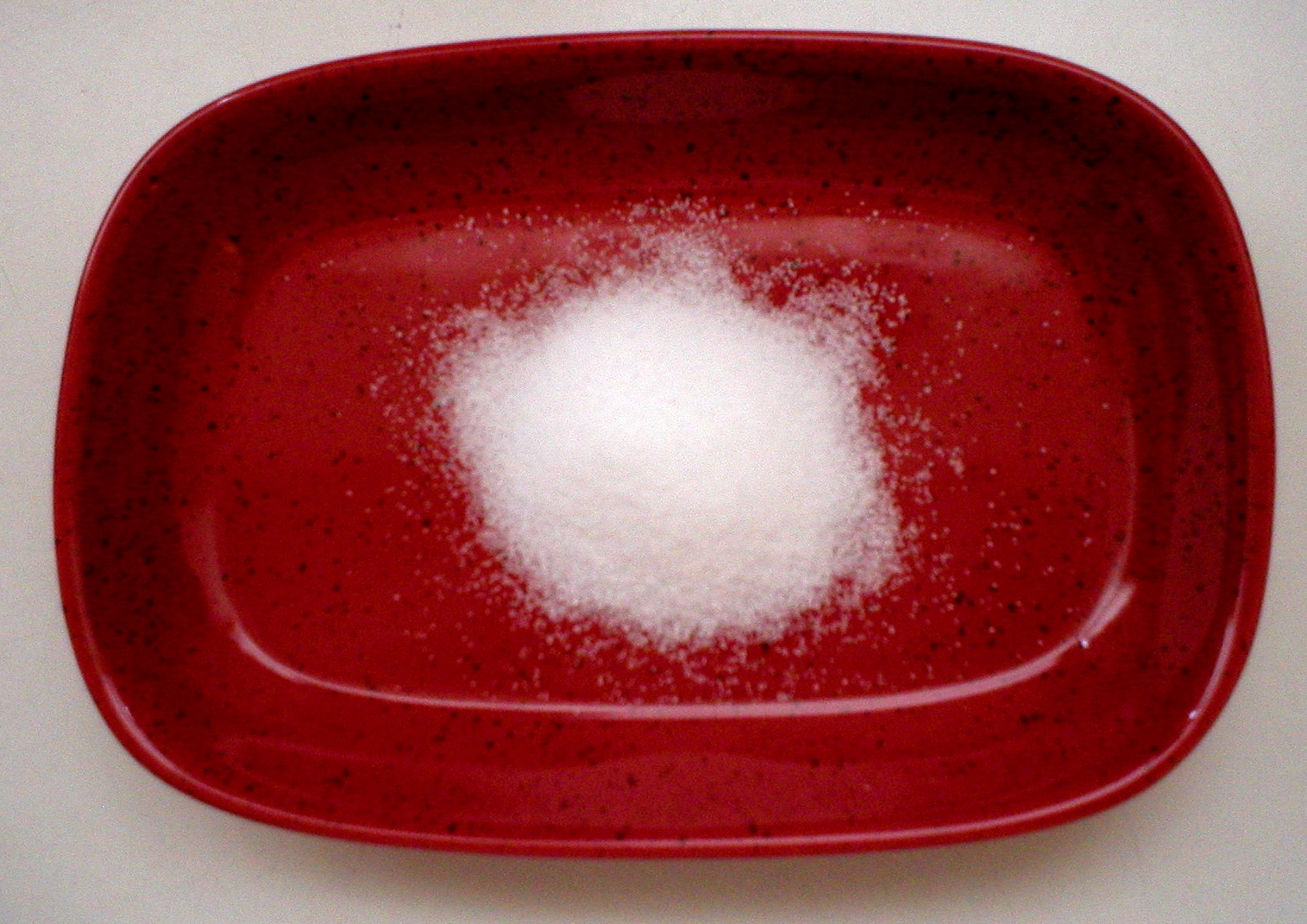
How Much Sodium Should We Consume?
The American Heart Association recommends no more than 2,300 milligrams (mg) of sodium per day for most adults. However, an ideal limit is no more than 1,500 mg per day for most adults, especially for those with high blood pressure. To put this into perspective, just one teaspoon of table salt contains about 2,300 mg of sodium.
Strategies for Reducing Sodium at the Grocery Store
One of the most effective ways to lower your sodium intake is to make smart choices while shopping for groceries. Here are some tips to help you navigate the supermarket aisles:
- Choose fresh, frozen, or canned vegetables with no added salt or sauce.
- Look for packaged foods labeled “low sodium,” “reduced sodium,” or “no salt added.”
- Compare Nutrition Facts labels and opt for products with the lowest sodium content per serving.
- For prepared meals, aim for options with less than 600 mg of sodium per meal.
- Be mindful of serving sizes and the number of servings per container when checking sodium content.
- Select fresh poultry, fish, pork, and lean meat instead of processed meats when possible.
- Check if fresh meats have been treated with saline or salt solutions and choose alternatives if so.
Is there a way to get assistance with low-sodium shopping at the grocery store? Many supermarkets offer low-sodium shopping lists or have registered dietitians on staff who can provide guidance. Don’t hesitate to ask your grocer for these resources or consult with a registered dietitian for personalized advice on managing your sodium intake.

Low-Sodium Cooking Techniques for Home Meals
Preparing meals at home gives you greater control over your sodium intake. Here are some strategies to reduce sodium in your home-cooked dishes:
- Use herbs, spices, and salt-free seasonings to add flavor without sodium.
- Experiment with citrus juices or vinegars to enhance taste.
- Cook rice, pasta, beans, and meats from their basic, unprocessed forms.
- Increase your intake of fruits and vegetables, which are naturally low in sodium.
- Limit the use of sauces, mixes, and instant products that often contain high levels of sodium.
How can you make low-sodium meals more flavorful? Try roasting or grilling vegetables to bring out their natural sweetness. Use garlic, onions, and aromatic herbs like rosemary, thyme, and basil to add depth to your dishes. Marinating meats in herb-infused oils or low-sodium broths can also enhance taste without relying on salt.
Navigating Restaurant Dining and Takeout Options
Eating out can be challenging when trying to reduce sodium intake, as restaurant meals are often high in salt. However, with some careful planning and communication, you can still enjoy dining out while maintaining a low-sodium diet:
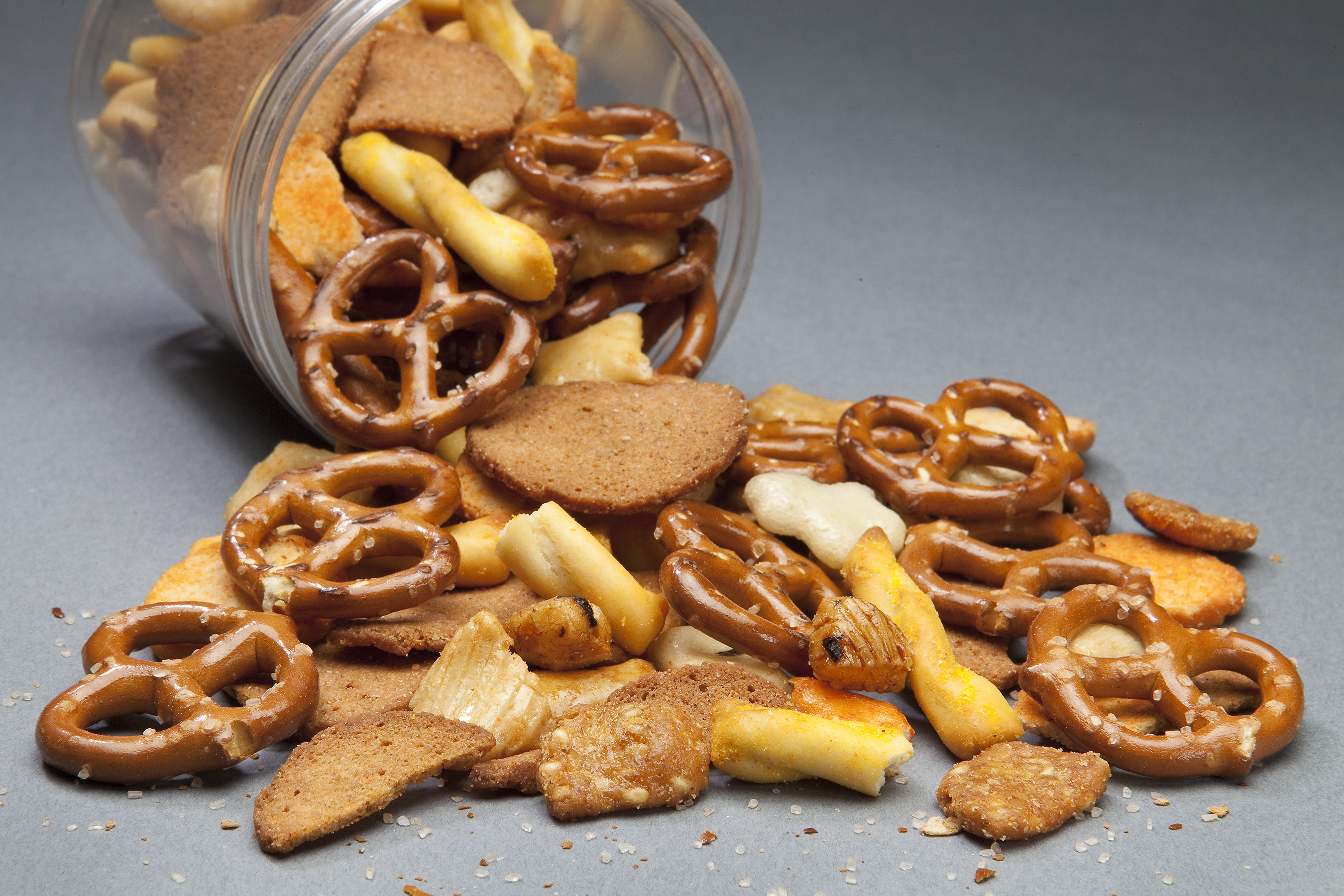
- Request nutrition information before ordering to make informed choices.
- Ask for your meal to be prepared without added salt.
- Choose vegetables or fruit as side dishes instead of saltier options.
- Consider sharing a meal to reduce portion sizes and sodium intake.
- Treat takeout and fast food as occasional indulgences rather than regular meals.
Are there specific cuisines that tend to be lower in sodium? Mediterranean and Japanese cuisines often feature fresh ingredients and minimal processing, which can translate to lower sodium content. However, it’s still important to inquire about preparation methods and ask for low-sodium options when available.
The DASH Diet: A Heart-Healthy Approach to Eating
The Dietary Approaches to Stop Hypertension (DASH) eating plan is a scientifically-backed approach to reducing blood pressure and improving heart health. This diet emphasizes:
- Low sodium intake
- Reduced cholesterol and saturated fats
- High consumption of fruits and vegetables
- Increased fiber intake
- Adequate potassium from food sources
- Low-fat dairy products
How effective is the DASH diet in lowering blood pressure? Studies have shown that following the DASH eating plan can lower blood pressure in as little as two weeks. When combined with other lifestyle changes, such as increased physical activity, the benefits can be even more significant.

Understanding Sodium Content in Common Foods
Being aware of the sodium content in everyday foods can help you make more informed choices. Here’s a brief overview of sodium levels in some common food items:
- Bread: 80-230 mg per slice
- Cheese: 150-450 mg per ounce
- Cold cuts and cured meats: 500-1050 mg per 2 ounces
- Pizza: 600-1300 mg per slice
- Soup: 350-950 mg per cup
Why does sodium content vary so much within food categories? Factors such as processing methods, brand recipes, and serving sizes can all contribute to differences in sodium levels. This is why it’s crucial to read nutrition labels and compare products, even within the same food category.
The Role of Food Labels in Sodium Reduction
Understanding food labels is crucial for managing sodium intake. Here’s what to look for:
- Sodium-free: Less than 5 mg of sodium per serving
- Very low sodium: 35 mg or less per serving
- Low sodium: 140 mg or less per serving
- Reduced sodium: At least 25% less sodium than the regular product
- Light in sodium: At least 50% less sodium than the regular product
How can you use this information to make better choices? When comparing products, look beyond just the front-of-package claims. Check the Nutrition Facts panel for the actual sodium content per serving and consider how many servings you typically consume.
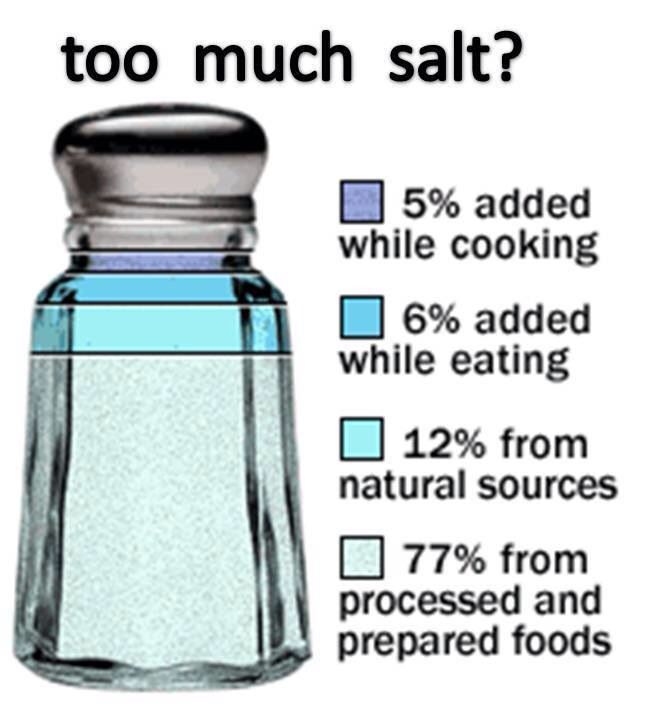
Decoding Ingredient Lists
Ingredient lists can also provide valuable information about a product’s sodium content. Look out for these sodium-containing ingredients:
- Salt
- Sodium chloride
- Monosodium glutamate (MSG)
- Baking soda (sodium bicarbonate)
- Sodium nitrate or nitrite
- Sodium benzoate
Remember that ingredients are listed in order of predominance, so if salt or other sodium-containing compounds are near the top of the list, the product is likely high in sodium.
Long-Term Strategies for Maintaining a Low-Sodium Lifestyle
Reducing sodium intake is not just a short-term goal but a lifestyle change. Here are some strategies to help you maintain a low-sodium diet over the long term:
- Gradually reduce sodium intake to allow your taste buds to adjust.
- Keep a food diary to track your sodium consumption and identify areas for improvement.
- Experiment with new recipes and cuisines that naturally feature lower sodium ingredients.
- Educate family members and friends about the importance of sodium reduction to create a supportive environment.
- Plan meals in advance to avoid relying on high-sodium convenience foods.
- Stay hydrated, as proper hydration can help your body process sodium more efficiently.
How long does it take to adjust to a lower sodium diet? While individual experiences may vary, many people find that their taste preferences adapt within a few weeks to a couple of months of consistent low-sodium eating. As you reduce your sodium intake, you may find that you become more sensitive to the taste of salt, allowing you to enjoy foods with less added sodium.
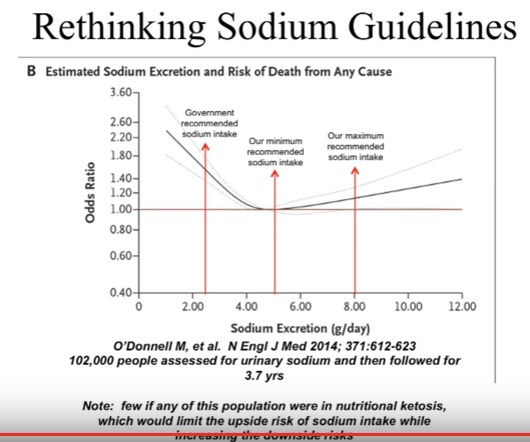
The Impact of Lifestyle Factors on Sodium Sensitivity
It’s important to note that other lifestyle factors can influence how your body responds to sodium. Consider these additional strategies for managing sodium sensitivity:
- Maintain a healthy weight, as excess weight can increase sodium sensitivity.
- Engage in regular physical activity, which can help lower blood pressure and improve cardiovascular health.
- Limit alcohol consumption, as excessive alcohol intake can raise blood pressure and increase sodium retention.
- Manage stress through techniques like meditation, yoga, or deep breathing exercises.
- Ensure adequate intake of other minerals like potassium, magnesium, and calcium, which work in balance with sodium in the body.
By incorporating these lifestyle modifications alongside a low-sodium diet, you can enhance your overall health and potentially reduce your sensitivity to sodium’s effects on blood pressure.
Overcoming Challenges in Sodium Reduction
While reducing sodium intake is beneficial for health, it can come with its own set of challenges. Here are some common obstacles and strategies to overcome them:

Dining Out with Friends and Family
Social situations can make it difficult to stick to a low-sodium diet. How can you navigate these scenarios? Consider these approaches:
- Research restaurant menus in advance and identify low-sodium options.
- Be assertive in communicating your dietary needs to servers and chefs.
- Suggest restaurants that offer healthier, lower-sodium choices to your social group.
- Focus on enjoying the company and conversation rather than solely on the food.
Dealing with Cravings for Salty Foods
Cravings for high-sodium foods can be challenging, especially in the early stages of sodium reduction. What strategies can help manage these cravings?
- Keep low-sodium snacks on hand, such as unsalted nuts or fresh vegetables with homemade dips.
- Distract yourself with activities unrelated to food when cravings hit.
- Experiment with intensely flavored low-sodium foods, like citrus fruits or strong cheeses, to satisfy your taste buds.
- Stay well-hydrated, as thirst can sometimes be mistaken for salt cravings.
Balancing Sodium Reduction with Other Dietary Needs
For individuals managing multiple dietary requirements, such as those with diabetes or celiac disease, sodium reduction can seem like an additional challenge. How can you integrate low-sodium choices with other dietary restrictions?

- Work with a registered dietitian to create a personalized meal plan that addresses all your nutritional needs.
- Focus on whole, unprocessed foods that naturally meet multiple dietary requirements.
- Learn to prepare meals from scratch to have full control over ingredients and sodium content.
- Explore specialized cookbooks and online resources that cater to multiple dietary restrictions.
By addressing these challenges head-on and developing strategies to overcome them, you can successfully maintain a low-sodium lifestyle while still enjoying a varied and satisfying diet.
The Future of Sodium Reduction: Food Industry Trends and Policy Changes
As awareness of the health impacts of high sodium consumption grows, both the food industry and policymakers are taking steps to address this issue. What changes can we expect to see in the coming years?
Food Industry Initiatives
Many food manufacturers are voluntarily reducing sodium in their products. This trend is driven by consumer demand for healthier options and increased awareness of the health risks associated with high sodium intake. Some initiatives include:
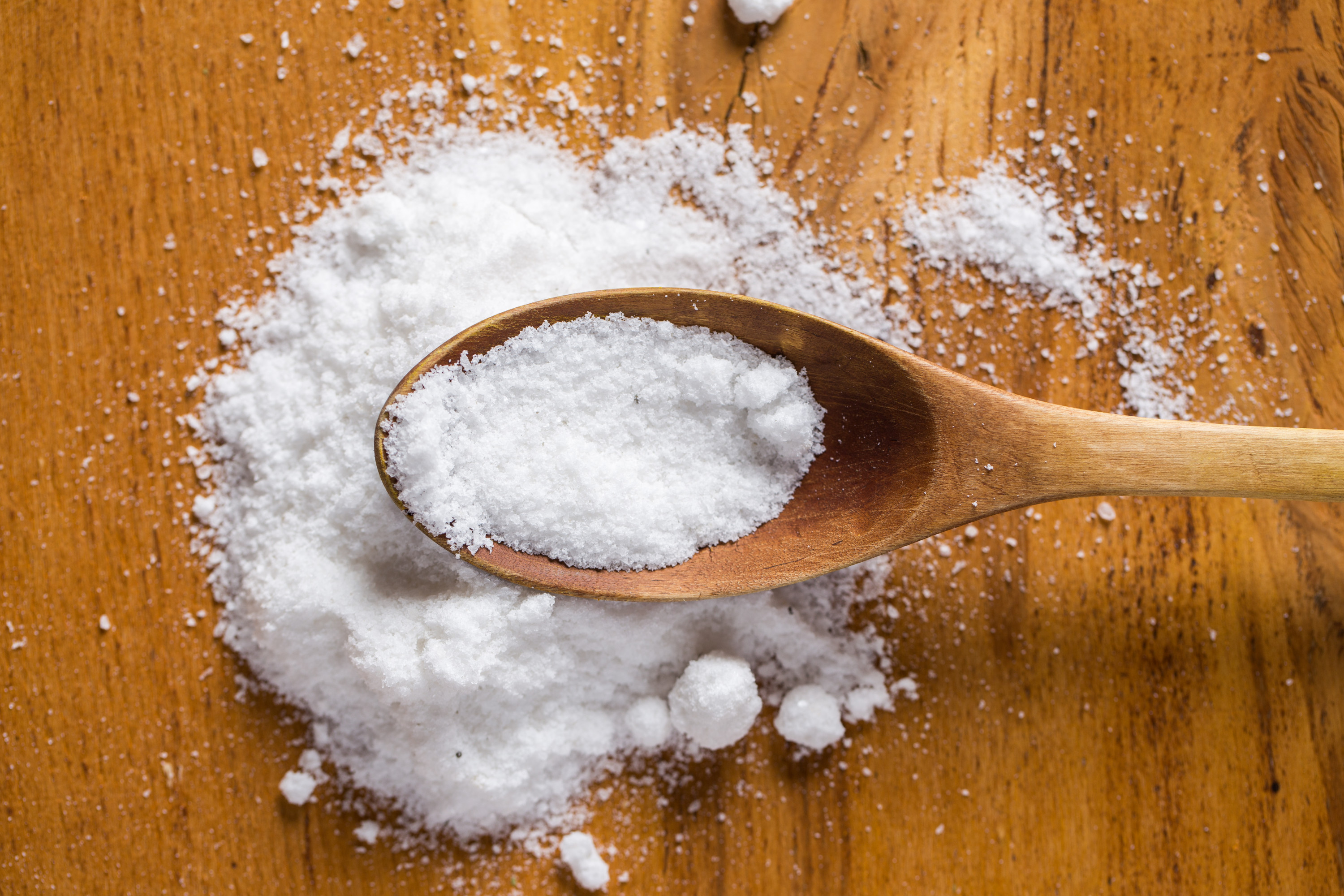
- Gradual sodium reduction in processed foods to allow consumer palates to adjust.
- Development of new food technologies to enhance flavor without relying on salt.
- Increased use of herbs, spices, and other natural flavor enhancers.
- Reformulation of popular products to offer lower-sodium versions.
Policy and Regulation
Government agencies and health organizations are also taking action to promote sodium reduction. Some current and potential future measures include:
- Mandatory sodium reduction targets for certain food categories.
- Improved nutrition labeling to make sodium content more transparent.
- Public education campaigns about the health risks of excessive sodium consumption.
- Incentives for food manufacturers to produce lower-sodium products.
How might these changes affect consumers? As lower-sodium options become more prevalent and palatable, it may become easier for individuals to reduce their sodium intake without feeling deprived or having to make significant changes to their eating habits.
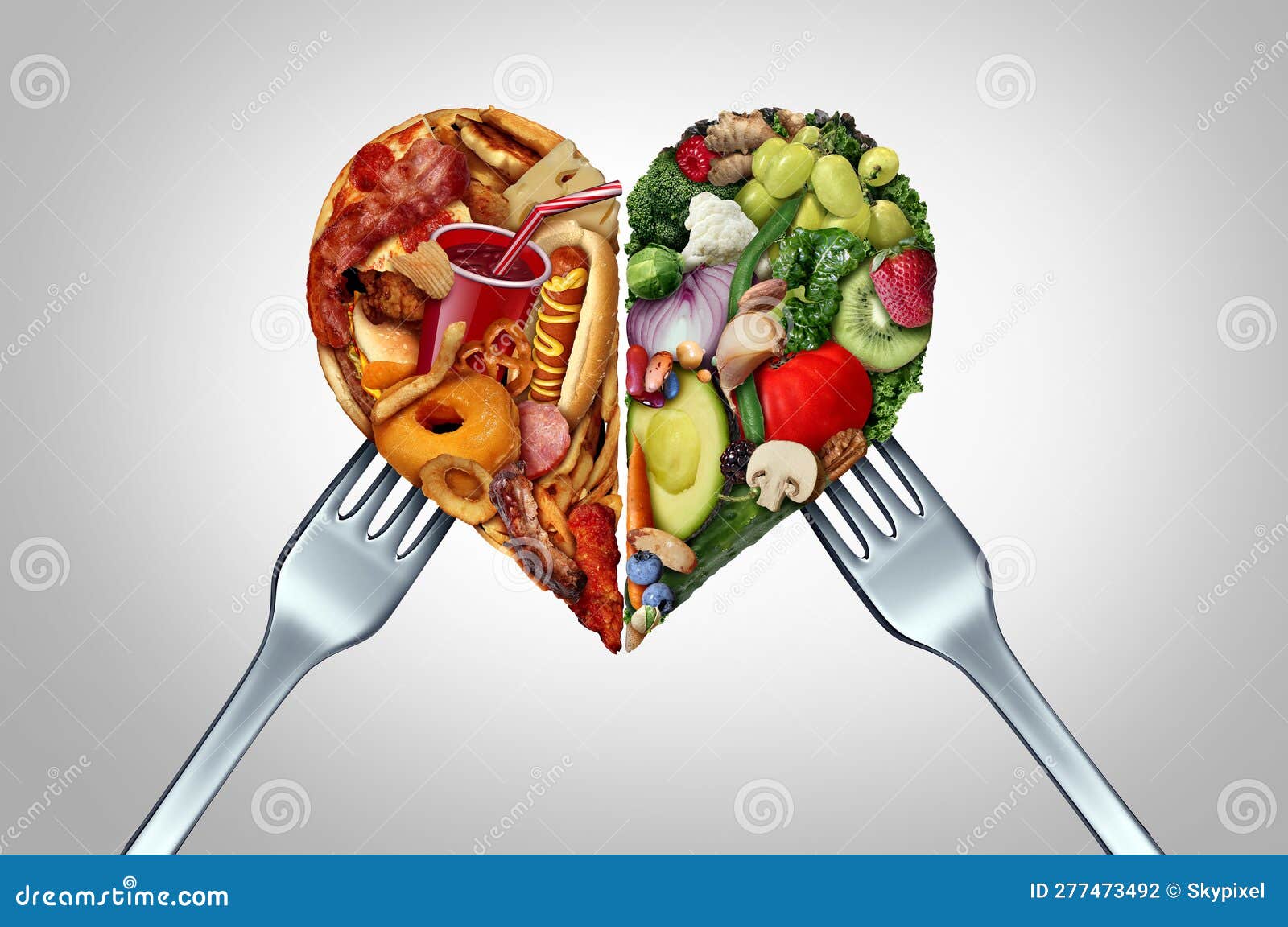
The Role of Technology in Sodium Reduction
Advancements in food science and technology are playing a crucial role in sodium reduction efforts. Some innovative approaches include:
- Development of salt substitutes that mimic the taste and functionality of sodium chloride.
- Use of nanotechnology to create salt particles that provide more flavor with less sodium.
- Application of fermentation techniques to naturally enhance umami flavors in foods.
- Creation of smart packaging that can help consumers track their sodium intake.
These technological innovations may revolutionize how we approach sodium reduction in the food industry and make it easier for consumers to maintain a low-sodium diet without sacrificing taste or convenience.
As we look to the future, it’s clear that sodium reduction will continue to be a priority in public health and the food industry. By staying informed about these trends and taking advantage of new low-sodium options as they become available, consumers can play an active role in protecting their health and supporting positive changes in the food system.
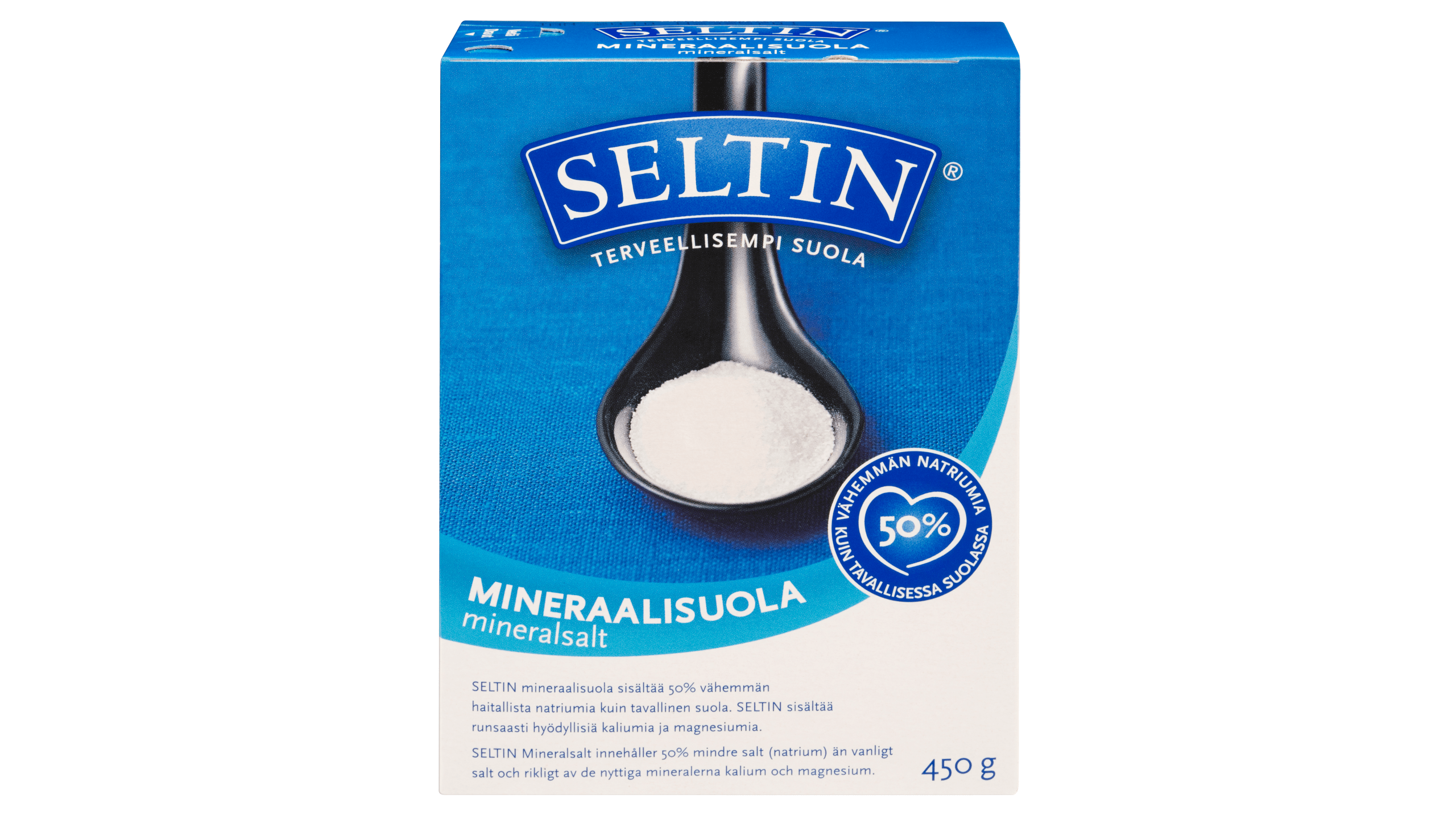
How to Reduce Sodium Intake
Choose Wisely—Sodium Content Can Vary Within Food Categories
View Larger
The majority of sodium in our diets comes from packaged and restaurant food (not the salt shaker) as a result of food processing. Even foods that may not taste salty can be major sources of sodium. Foods with only moderate amounts of sodium, such as bread, can be major sources of sodium because they’re eaten so frequently.
Tips for Reducing Sodium Intake
At the Grocery Store
- Buy fresh, frozen, or canned vegetables with no salt or sauce added.
- Choose packaged foods labeled “low sodium,” “reduced sodium,” or “no salt added” when available.
- Compare the amount of sodium in different products by reading Nutrition Facts labels. Choose the options with the lowest amounts of sodium.
- When buying prepared meals, look for those with less than 600 milligrams (mg) of sodium per meal, which is the upper limit set by the Food and Drug Administration for a meal or main dish to be labeled “healthy.
 ”
” - Check the amount of sodium per serving, and don’t forget to check the number of servings per container.
- When possible, purchase fresh poultry, fish, pork, and lean meat, rather than cured, salted, smoked, and other processed meats. For fresh items, check to see whether saline or salt solution has been added—if so, choose another brand.
- Ask your grocer if they have a low sodium shopping list available.
- Ask to speak to the registered dietitian at your local grocery store to learn more about buying low sodium products. If your grocer doesn’t have a registered dietitian, ask your doctor for a referral. A registered dietitian can provide valuable guidance on reducing your family’s sodium intake and managing blood pressure
At Home
- When cooking, use alternatives to replace or reduce the amount of salt you use, such as garlic, citrus juice, salt-free seasonings, or spices.
- Prepare rice, pasta, beans, and meats from their most basic forms (dry and fresh) when possible.

- Eat more fruits and vegetables.
- Limit sauces, mixes, and instant products, including flavored rice and ready-made pasta.
Dining Out
- Ask for nutrition information before you order, and select a lower sodium meal.
- Ask that no salt be added to your meal.
- Order vegetables with no salt added or fruit as a side item.
- Split a meal with a friend or family member.
- Keep takeout and fast food to an occasional treat.
Choose a Heart-Healthy Diet
The Dietary Approaches to Stop Hypertension (DASH) eating plan is a simple, heart-healthy diet that can help prevent or lower high blood pressure. The DASH diet is low in sodium, cholesterol, and saturated and total fats, and high in fruits and vegetables, fiber, potassium, and low-fat dairy products.
If you follow the DASH eating plan and also make other healthy lifestyle changes, such as getting more physical activity, you will see the biggest benefits. Learn more about the DASH eating plan.
Learn more about the DASH eating plan.
Range of Sodium Content for Selected Foods
View Larger
Values rounded to the nearest 10 mg.
Source: U.S. Department of Agriculture, Agricultural Research Service. National Nutrient Database for Standard Reference.
Page last reviewed: August 23, 2022
Content source: National Center for Chronic Disease Prevention and Health Promotion
, Division for Heart Disease and Stroke Prevention
To receive email updates about this page, enter your email address:
- Stroke
- Heart Disease
- Cholesterol
- High Blood Pressure
- Million Hearts®
- WISEWOMAN
How to Reduce Sodium | American Heart Association
You might be getting more sodium than you need, even if you never pick up the salt shaker.
That’s because more than 70 percent of the sodium we eat comes from packaged and restaurant foods. That can make it hard to control how much sodium you eat, because it’s added to your food before you buy it.
That can make it hard to control how much sodium you eat, because it’s added to your food before you buy it.
I know that too much sodium hurts my health. What can I do to cut back?
At the store/while shopping for food:
- Choose packaged and prepared foods carefully. Compare labels and choose the product with the lowest amount of sodium (per serving) you can find in your store. You might be surprised that different brands of the same food can have different sodium levels.
- Pick fresh and frozen poultry that hasn’t been injected with a sodium solution. Check the fine print on the packaging for terms like “broth,” “saline” or “sodium solution.” Sodium levels in unseasoned fresh meats are around 100 milligrams (mg) or less per 4-ounce serving.
- Select condiments with care. For example, soy sauce, bottled salad dressings, dips, ketchup, jarred salsas, capers, mustard, pickles, olives and relish can be sky-high in sodium.
 Look for a reduced- or lower-sodium version.
Look for a reduced- or lower-sodium version. - Opt for canned vegetables labeled “no salt added” and frozen vegetables without salty sauces. When they’re added to a casserole, soup or other mixed dish, there are so many other ingredients involved that you won’t miss the salt.
- Look for products with the American Heart Association’s Heart-Check mark to find foods that can be part of an overall healthy dietary pattern.
While the Heart-Check mark doesn’t necessarily mean that a product is “low-sodium,” it does mean that the food meets AHA’s sodium criteria to earn the Heart-Check mark.
You can eat foods with varying amounts of sodium and still achieve a balanced and heart-healthy diet. Learn more about the Heart-Check Food Certification Program.
When preparing food:
- Use onions, garlic, herbs, spices, citrus juices and vinegars in place of some or all of the salt to add flavor.
 Our recipes and tips can help!
Our recipes and tips can help! - Drain and rinse canned beans (like chickpeas, kidney beans, etc.) and vegetables. You’ll cut the sodium by up to 40 percent.
- Combine lower-sodium versions of food with regular versions. If you don’t like the taste of lower-sodium foods right now, try combining them in equal parts with a regular version of the same food. You’ll get less salt and probably won’t notice much difference in taste. This works especially well for broths, soups and tomato-based pasta sauces.
- Cook pasta, rice and hot cereal without salt. You’re likely going to add other flavorful ingredients, so you won’t miss the salt.
- Cook by grilling, braising, roasting, searing and sautéing to bring out natural flavors. This will reduce the need to add salt.
- Incorporate foods with potassium like sweet potatoes, potatoes, greens, tomatoes and lower-sodium tomato sauce, white beans, kidney beans, nonfat yogurt, oranges, bananas and cantaloupe.
 Potassium helps counter the effects of sodium and may help lower your blood pressure.
Potassium helps counter the effects of sodium and may help lower your blood pressure.
At restaurants:
- Tell them how you like it. Ask for your dish to be made without extra salt.
- Taste your food before adding salt. If you think it needs a boost of flavor, add freshly ground black pepper or a squeeze of fresh lemon or lime and test it again before adding salt. Lemon and pepper are especially good on fish, chicken and vegetables.
- Watch out for these food words: pickled, brined, barbecued, cured, smoked, broth, au jus, soy sauce, miso or teriyaki sauce. These tend to be high in sodium. Foods that are steamed, baked, grilled, poached or roasted may have less sodium.
- Control portion sizes. When you cut calories, you usually cut the sodium too. Ask if smaller portions are available, share the meal with a friend or ask for a to-go box when you order and place half the meal in the box to eat later.

Ask about the sodium content of the menu items. Chain restaurants with 20 or more locations must provide nutrition information, including sodium content, to customers upon request.
Is my food going to taste bland with less salt?
With less salt, you can taste your food’s natural flavor, especially when you use cooking techniques and flavorful ingredients (see tips above) to enhance it.
Over time, your taste buds can adjust to liking less salt. Studies show that when people follow a lower-sodium diet, they start to prefer it, and that the foods they used to enjoy taste too salty. Try it and see for yourself!
What about salt substitutes?
There are many salt substitutes, and a few of them replace some or all of the sodium with potassium. Most people can use them, but certain medical conditions (like kidney disease) and medications have implications on your potassium intake. Talk with your healthcare professional about whether a salt substitute is right for you.
Written by American Heart Association editorial staff and reviewed by science and medicine advisors. See our editorial policies and staff.
Last Reviewed: May 23, 2018
Related Articles
The American Heart Association Diet and Lifestyle Recommendations
five tips to reduce salt intake
We often consume large amounts of salt without even realizing it, for example, when we buy ready-made food or order food through delivery apps.
WHO highlights the importance of reducing salt intake and suggests a range of practical measures that Member States can take to implement policies to reduce salt intake in the population and improve people’s health and well-being.
1. Break the habit of over-salting: no more than 5 grams (g) of salt per day
The WHO recommends that adults consume no more than 5 grams of salt per day. For children, the recommendation is even less: 2 g of salt per day. However, the current daily salt intake in the Region is between 8 g and 19 g, well above this recommendation.
For children, the recommendation is even less: 2 g of salt per day. However, the current daily salt intake in the Region is between 8 g and 19 g, well above this recommendation.
It is estimated that even a 15% reduction in salt intake could avert 8.5 million premature deaths over the next 10 years in low- and middle-income countries and reduce spending in high-income countries.
Member States have agreed to achieve a 30% reduction in salt intake by 2025 as one of the priority actions in the fight against noncommunicable diseases (NCDs).
2. Read labels carefully and choose foods with less salt
In some countries in the Region, up to 75-80% of the salt people consume daily comes from processed foods. Many people are not aware of this indicator.
WHO recommends that Member States take an important policy step to ensure that there are clear and standardized labels on the front of food packaging. This will help consumers understand what is in the products they buy, and will also encourage manufacturers to reconsider the ingredients in their food offerings.
3. Change the composition of high-salt foods
Given the high proportion of processed foods in the modern diet, many countries in the Region have decided to focus on improving their composition.
Food reformulation was found to be cost-effective and (for the most part) politically feasible. Research has shown that eating foods that meet nutritional goals in the diet contributes to an overall reduction in the risk of disease.
In addition to changing the composition of products, measures can also be taken to gradually change individual buying habits and consumer behavior, without necessarily informing the consumers themselves.
WHO has developed global targets for sodium content in various food categories: this is an important step to simplify the process of changing the composition of salty foods and help progress towards global goals to reduce salt intake among the population.
4. Food Delivery Services: Eliminate Salt
Food delivery apps that have become popular due to the COVID-19 pandemic are also high in salt, as well as calories, sugar and saturated fat.
As we increasingly choose food and drink in the digital space, it is important for health authorities to understand how the use of food delivery services can affect NCDs and other public health issues.
5. Focus on vulnerable populations
Salt consumption patterns – like dietary habits in general – vary across social groups, which can lead to health inequities.
Research has shown that socioeconomically disadvantaged populations are often less aware of government guidelines and have lower levels of health literacy, and may have higher levels of voluntary salt intake and salt intake in general. higher by 5-10%.
Survey data on salt intake indicate that salt intake among the general population ranges from 8.7 g in the Netherlands to 19.0 g in Kazakhstan.
WHO European Program of Work 2020–2025 (EPW) calls for action to reduce health inequalities and to work together to improve health. The guidance and support resource kits for countries being developed by WHO can help Member States develop the best approach to deal with this problem.
“It is essential that all countries lay a solid foundation for health literacy. People have the right to know how diet and salt intake affect their well-being and future,” said Dr Kremlin Wickramasinghe, Acting Head of the WHO European Office for the Prevention and Control of Noncommunicable Diseases.
“Enabling conditions for salt reduction can be created through local policy action and healthy diet promotion in schools, workplaces, health facilities, communities and cities. We need to make it easier for consumers in the WHO European Region and beyond to make healthier food choices.”
“,”datePublished”:”2022-03-14T09:30:00.0000000+00:00″,”image”:”https://cdn.who.int/media/images/librariesprovider2/default-album /five-recommendations-to-reduce-salt-intake-to-live-longer-and-healthier-lives-16-9.jpg?sfvrsn=9fead9d3_15″,”publisher”:{“@type”:”Organization”, “name”:”World Health Organization: WHO”,”logo”:{“@type”:”ImageObject”,”url”:”https://www.who.int/Images/SchemaOrg/schemaOrgLogo. jpg”, “width”:250,”height”:60}},”dateModified”:”2022-03-14T09:30:00.0000000+00:00″,”mainEntityOfPage”:”https://www.who.int/europe /en/news/item/14-03-2022-5-recommendations-to-reduce-salt-intake-to-live-longer-and-healthier-lives”,”@context”:”http://schema. org”,”@type”:”NewsArticle”};
jpg”, “width”:250,”height”:60}},”dateModified”:”2022-03-14T09:30:00.0000000+00:00″,”mainEntityOfPage”:”https://www.who.int/europe /en/news/item/14-03-2022-5-recommendations-to-reduce-salt-intake-to-live-longer-and-healthier-lives”,”@context”:”http://schema. org”,”@type”:”NewsArticle”};
About reducing the consumption of table salt — St. Petersburg State Budgetary Institution of Healthcare Dermatovenereologic Dispensary No. 11
There is a clear connection between excessive consumption of dietary salt and the development of arterial hypertension. Excessive dietary intake of sodium (mainly in the form of table salt) is one of the leading risk factors for developing arterial hypertension. The accumulation of sodium salts in the walls of blood vessels has a damaging effect and has a bad effect on vascular tone.
Excessive salt intake contributes to the accumulation of fluid, both in the vascular bed and in the tissues. The physiological norm of daily intake of sodium (Na) is 3. 5 grams. This amount is found in about 5.0-5.5 grams of table salt (NaCl).
5 grams. This amount is found in about 5.0-5.5 grams of table salt (NaCl).
In accordance with WHO recommendations, the upper limit of salt intake for healthy people is 6 grams per day, and for arterial hypertension – 5 grams per day. This is taking into account the salt contained in bread, canned and other products. The habit of eating salted food is not physiologically justified. It must be dealt with like any bad habit.
How to reduce salt intake?
It is recommended that you use the reference tables containing the necessary information more often.
Low content of sodium chloride is found in products of vegetable origin, cottage cheese, fresh or frozen fish, meat products. Salt in ready-made gastronomic products is much higher. For example, in sausage it is 10-15 times more than in natural meat.
The tendency to excessive consumption of bakery products of standard baking leads to an unfavorable combination for patients with hypertension – with bread, along with an excess of calories, the body also receives an excess of sodium chloride. The exception is special dietary products with a low content of sodium chloride, a high content of fibers.
The exception is special dietary products with a low content of sodium chloride, a high content of fibers.
Salt is often used for special processing and preservation of foods. In addition, most people add salt to food at the table. Salt is predominantly consumed with specially processed foods (about 80% of total salt intake). Therefore, canned, salted, smoked foods are recommended to be consumed only in small quantities and not every day. Food should be cooked with a minimum amount of salt, and herbs and spices should be added to improve the taste. You should not add salt to food at the table without tasting it. It is better to remove the salt shaker from the table.
The use of iodized salt is recommended. Iodine deficiency is a common pathology, especially among young children and women. One of the modern ways to prevent iodine deficiency is universal salt iodization.
Recommendations for hypertensive patients to reduce salt intake.
Excessive dietary intake of sodium (mainly in the form of table salt) is one of the leading risk factors for the development of arterial hypertension. A decrease in sodium intake leads to a significant decrease in systolic and diastolic blood pressure, and further to a decrease in left ventricular hypertrophy.
A decrease in sodium intake leads to a significant decrease in systolic and diastolic blood pressure, and further to a decrease in left ventricular hypertrophy.
Among persons with increased blood pressure, persons with increased sensitivity to salt loads are identified. In individuals with hypersensitivity to salt loading, even a small sodium load causes an increase in the level of mean blood pressure by 10 mm Hg. Reducing sodium intake and increasing potassium intake leads to a decrease in blood pressure by 2-8 mm Hg.
Every patient with arterial hypertension should follow the following recommendations:
- Avoid foods containing a lot of salt (canned, salted, smoked).
- Pay attention to the labeling of processed foods for their salt content.
- Increase consumption of foods low in salt (vegetables, fruits).
- Reduce the amount of salt added during cooking.5.Before you automatically add salt to food, you should first taste it and it is better not to add salt at all.
 The content of sodium salts in mg per 100g of the product.
The content of sodium salts in mg per 100g of the product.
| No. | Product | Content (mg) |
| 1. | Cereals | |
| Semolina | 10 | |
| Cereals: rice, Hercules, corn | 26 | |
| Buckwheat | 33 | |
| Pasta | 28 | |
| Wheat flour, 1st grade | 12 | |
| Baking | 270 | |
| Rusks | 528 | |
| Bread made from flour of the 1st grade | 488 | |
| Rye bread | 1100 | |
| 2. | Meat products | |
| Meat (beef, pork, lamb) | 20 | |
| Chickens | 10 | |
| Fish | 20-100 | |
| Egg | 55 | |
| Boiled sausages, frankfurters, sausages | 830 | |
| Semi-smoked sausages | 1600-1700 | |
| Raw-smoked sausages, smoked products (ham, neck, ham) | 2000-2200 | |
3. | Dairy products, butter | |
| Milk, yogurt, kefir, ice cream, cottage cheese | 50 | |
| Butter | 74 | |
| Pickled cheese | 1500-2000 | |
| Hard cheese | 940-1000 | |
| Sunflower oil | 0 | |
| Margarine | 187 | |
| 4. | Vegetables | 10-80 |
| Potato | 28 | |
| Cabbage, carrots | 10-20 | |
| Beetroot | 86 | |
| Beans | 40 | |
| Lentils | 100 | |
| Peas | 70 | |
| 5. | Fruits, berries | 10-30 |
| Fruit juices | 3 | |
| Jam | 9 | |
| Dried fruits | 100-200 | |
6.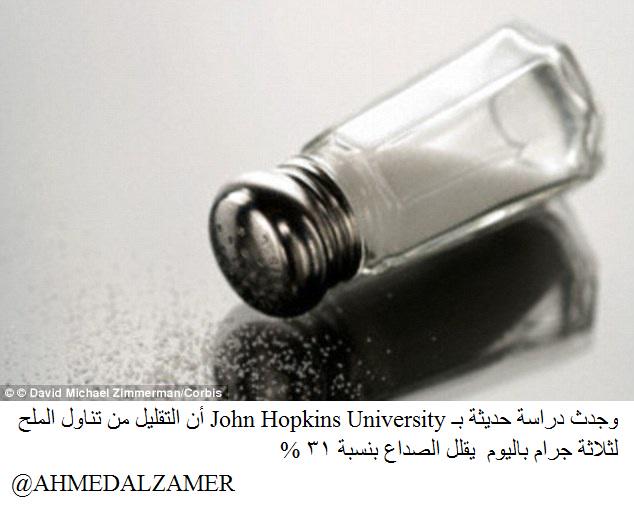 |

 ”
”
 Look for a reduced- or lower-sodium version.
Look for a reduced- or lower-sodium version. Our recipes and tips can help!
Our recipes and tips can help! Potassium helps counter the effects of sodium and may help lower your blood pressure.
Potassium helps counter the effects of sodium and may help lower your blood pressure.
 The content of sodium salts in mg per 100g of the product.
The content of sodium salts in mg per 100g of the product.